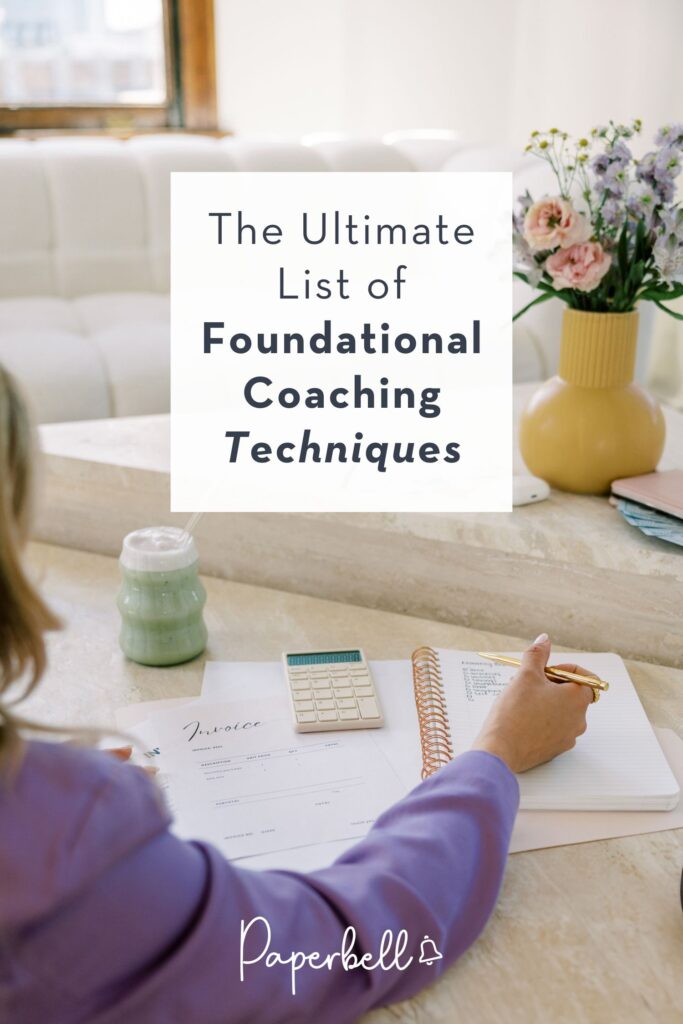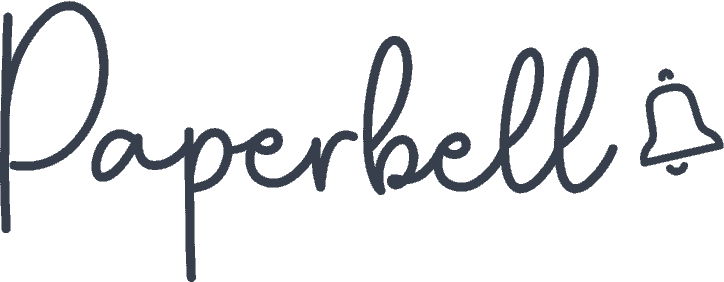As coaches, there’s nothing more inspiring than seeing our clients grow. To deliver positive change, you must have a foundational understanding of effective coaching tools.
Let’s look into some of the most widely used models and frameworks you can add to your coaching toolbelt.
Core Coaching Competencies
Active Listening
Active listening is one of the most foundational coaching skills. It means fully concentrating on what the client is saying, both verbally and nonverbally, without interrupting or mentally preparing a response.
A coach who practices active listening may nod, look up from their notes to maintain eye contact, or use verbal affirmations like “I see” to show engagement. They also pay careful attention to patterns in the client’s words and body language.
If a client says, “I feel stuck in my career,” the coach who is actively listening wouldn’t immediately jump to seeking a solution.
Instead, they would attentively absorb what the client is expressing and respond with a clarifying question like, “Can you tell me more about what feeling ‘stuck’ looks like for you?” This encourages the client to explore their thoughts further.
Powerful Questioning
Powerful questioning is about asking thought-provoking questions that challenge assumptions and encourage self-reflection. Evocative, open-ended questions help unlock new insights and possibilities instead of leading the client to a particular answer.
If a client says, “I hate my job,” a coach practicing powerful questioning wouldn’t ask, “Why don’t you quit?” Instead, they might say, “What does an ideal work environment look like for you?” This shifts the focus from frustration to clarifying what the client truly wants.
In coaching, we normally only use close-ended (yes-or-no) questions to confirm we understood the client correctly (see paraphrasing) or to confirm the client’s commitment to an action step.
Silence is just as important as asking questions in a coaching conversation. It can be used strategically to give the client space to process and elaborate on their response.
Reframing
Reframing is another effective coaching technique that helps clients see a situation from a new perspective, shifting their mindset from limitation to possibility. This is especially useful when a client feels stuck in negative thought patterns or self-perception.
A coach using reframing listens for limiting language and helps the client reinterpret their experience in a way that empowers them. This doesn’t dismiss their challenges and emotions but highlights their growth opportunities.
If a client says, “I failed my last business attempt,” a coach might respond, “What valuable lessons did that experience teach you for your next venture?” By shifting the narrative from failure to learning, the client can approach challenges with resilience.
Paraphrasing
Paraphrasing means restating the client’s words to confirm we understood them and encourage further reflection. It reassures the client they are being heard while allowing them to refine their thoughts.
Paraphrasing can be done either verbatim or by rephrasing the client’s words.
If a client says, “I’ll never be good at this,” you might reflect this back neutrally, saying “So you feel that you’ll never be good at this.” Hearing their own words mirrored can sometimes make them pause and reevaluate. They might respond, “Well… maybe I could get better by practicing more.”
You may also reword the client’s statement to highlight a new perspective or an underlying theme. If they say, “I have to do everything myself because no one else can do it right,” you may say, “It sounds like you take on a lot of responsibility and find it hard to trust others with important tasks.”
This gives the client a choice to either agree or disagree with the paraphrased statement and refine it to what feels true to them.
Coaching Models

GROW
The GROW model is the most widely used coaching framework. It uses a structured conversation to help clients move from their current situation to their desired state.
It’s the backbone of ongoing client sessions for many life coaches and can be applied anywhere from relationship to executive coaching.
The acronym stands for:
- Goal: Clarify what the client wants to achieve.
- Reality: Assess their current situation and any obstacles.
- Options: Explore different strategies or solutions.
- Way forward: Commit to specific actions and next steps.
The TGROW variation of this model adds “Topic” to the beginning of the conversation, defining the session’s focus before unfolding it through the subsequent steps of the model.
CLEAR
The CLEAR model emphasizes deep listening, exploration, and continuous learning. It is often used for developing interpersonal or leadership skills.
The acronym stands for:
- Contracting: Set expectations and agree on the coaching process.
- Listening: Use active listening to fully understand the client’s challenges.
- Exploring: Dig deeper into underlying beliefs, emotions, and perspectives.
- Action: Develop a concrete plan for change.
- Review: Reflect on progress, refine strategies, and ensure accountability.
This model is especially effective with clients who need support in making sustainable changes.
CIGAR
The CIGAR model is a solution-focused approach that helps clients move toward a clear vision by identifying the gap between their current state and desired outcome. It is particularly useful in career transitions and performance improvement.
The acronym stands for:
- Current reality: Assess where the client is now.
- Ideal: Define what success looks like for them.
- Gaps: Identify what’s missing to reach the ideal outcome.
- Action: Plan specific steps to bridge the gap.
- Review: Track progress and make adjustments as needed.
This model encourages a structured, goal-oriented conversation that keeps clients focused on achievable steps.
FUEL
The FUEL model is a flexible yet structured coaching framework designed for workplace coaching. It is commonly used in performance management, talent development, and mentoring.
The acronym stands for:
- Frame: Define the issue and establish the coaching objective.
- Understand: Explore the client’s perspective, emotions, and obstacles.
- Explore: Brainstorm possible strategies and solutions.
- Lay out: Create a clear action plan and accountability structure.
OSCAR
The OSCAR model is a results-driven coaching framework focusing on continuous improvement and accountability. It is widely used in business coaching, team coaching, and professional development.
The acronym stands for:
- Outcome: Define the goal or desired result.
- Situation: Assess the current reality and any obstacles.
- Choices: Identify potential strategies and solutions.
- Actions: Decide on specific next steps.
- Review: Monitor progress, reflect, and refine the approach.
This model is practical for professionals looking to achieve measurable results and sustain long-term improvements.
ACHIEVE
The ACHIEVE model is great for in-depth coaching engagements. It is used in both business strategy and personal development.
The acronym stands for:
- Assess: Evaluate the client’s current situation and needs.
- Creative brainstorming: Generate potential solutions and approaches.
- Hone goals: Define clear, specific, and actionable objectives.
- Initiate options: Explore practical steps forward.
- Evaluate options: Weigh the benefits and risks of each path.
- Validate action plan: Finalize a structured plan for implementation.
- Encourage momentum: Provide accountability and ongoing support.
This model is particularly valuable for clients working toward ambitious, multi-step goals that require thorough planning and execution.
Life and Business Coaching Frameworks
Wheel of Life
The Wheel of Life helps clients take a step back and see the bigger picture. Instead of focusing on a problem in isolation, it allows them to assess the various facets of their lives and identify where they feel unfulfilled.
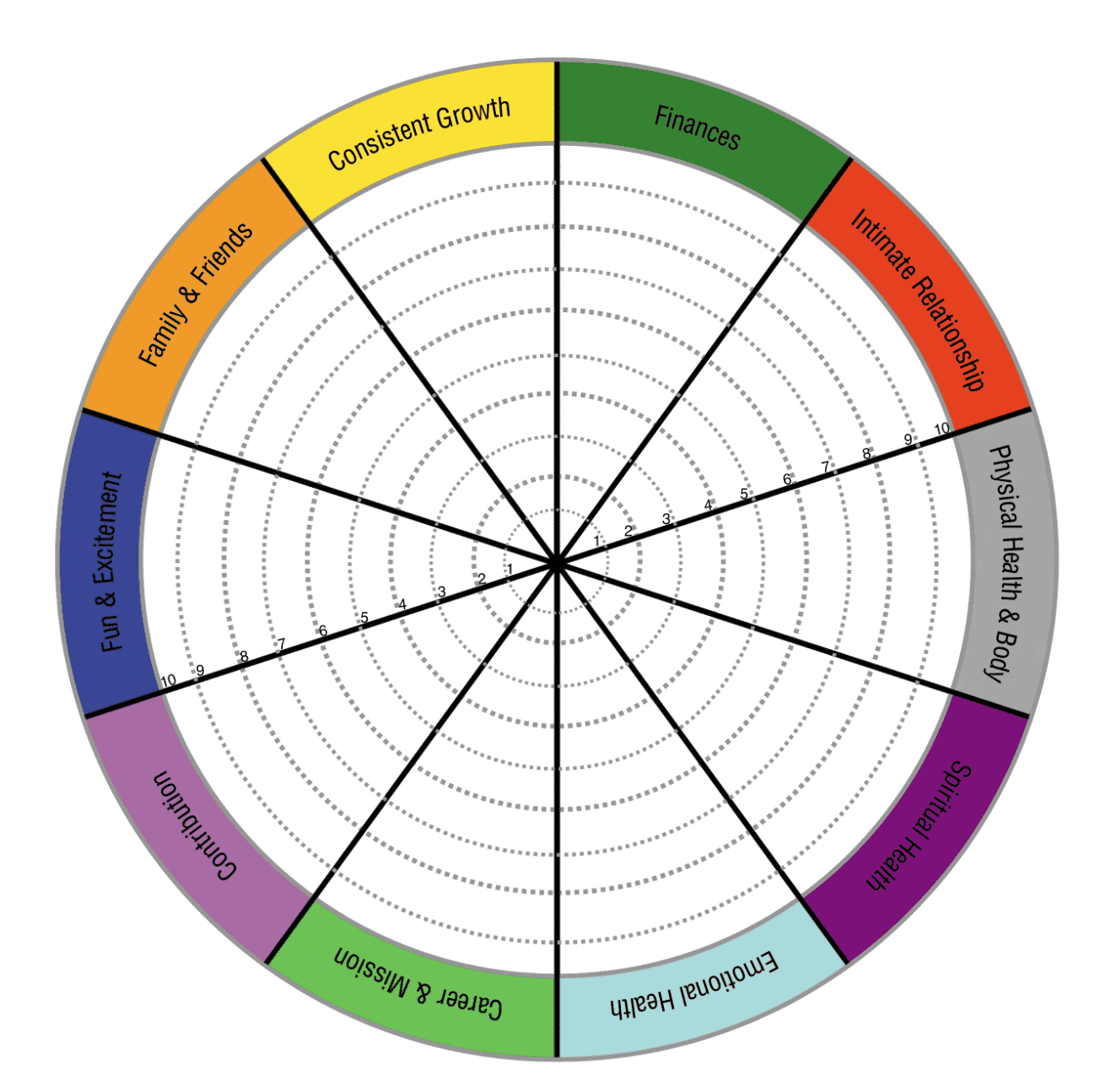
Image Source: titaniumsuccess.com
Coaches can use the Wheel of Life to help clients gain clarity on their priorities and take action toward a more balanced life. Here’s how it works:
- The client rates how satisfied they are with each area of their lives on a scale of 1 to 10. For example:
- Career/Work
- Finances
- Health
- Relationships
- Personal Growth
- Fun/Recreation
- Environment
- Contribution/Giving
- These scores are plotted on a circular diagram, creating a visual representation of where their focus goes in their life.
- If the wheel is uneven (maybe career is rated high, but health and relationships are low) it highlights areas that need attention.
- The coach then guides the client in exploring why certain areas are lower and what changes could improve their overall life satisfaction.
By seeing their lives from a bird’s-eye view, clients can focus on the areas that need work. The coach can help them define action steps that balance their wheel, such as scheduling regular time with loved ones or starting a morning routine.
Feelings Wheel
The Feelings Wheel is a tool that helps clients put words to their emotions, making it easier to understand and process what they’re going through.
People often describe both positive and negative emotions with a limited vocabulary, like “I feel bad” or “I’m stressed,” without pinpointing what’s behind it. This wheel allows clients to find more nuanced descriptions of how they’re feeling and uncover the root cause of their emotions.
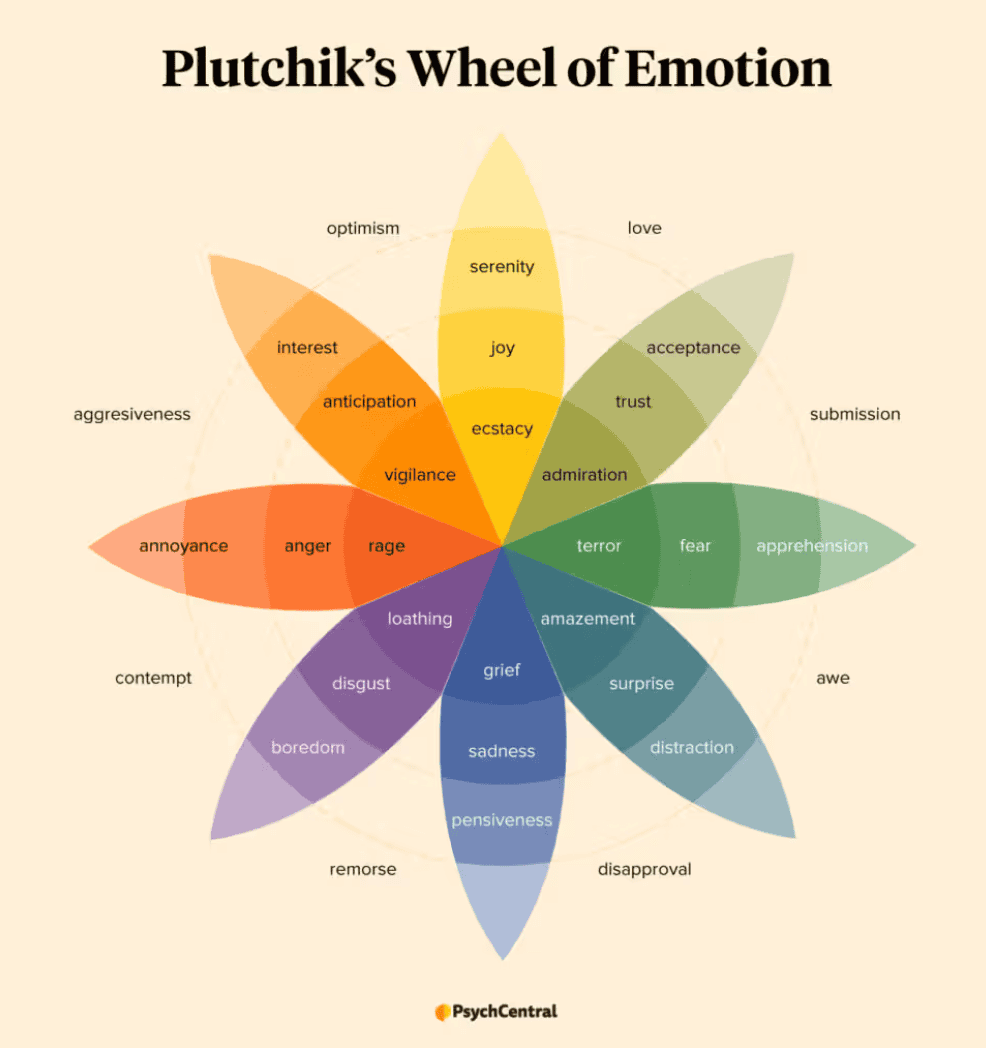
Robert Plutchik’s Feelings Wheel, Source: Psych Central
The Feelings Wheel has broader emotions in the center, like joy, sadness, anger, and fear. These branch out into more specific emotions, like resentment or frustration.
Naming emotions more accurately helps clients recognize patterns, understand triggers, and articulate their needs. For example, a client might say, “I just feel off.” Using the Feelings Wheel, they might realize that what they’re actually experiencing is loneliness or disappointment.
This deeper understanding allows for targeted actions to improve their emotional well-being.
SWOT Analysis
The SWOT analysis is a strategic planning tool that helps businesses or individuals evaluate their position in the market. It looks at four key aspects to assess internal and external factors that affect success.
The four quadrants of SWOT are:
- Strengths: What does the business do well? What are its advantages?
- Weaknesses: What areas need improvement? Where is the business lacking?
- Opportunities: What external factors could be leveraged for growth? Are there emerging trends or markets?
- Threats: What external factors could harm the business? Are there risks or competition to consider?
Mapping out these factors paints a clear picture of the client’s business landscape, letting them create a strategy for leveraging strengths, addressing weaknesses, seizing opportunities, and mitigating threats.
Eisenhower Matrix
The Eisenhower Matrix is a time-management framework that prioritizes tasks based on urgency and importance. It’s a great tool for business coaches who want to help clients focus on what truly moves the needle while minimizing distractions.
The four quadrants of the matrix are:
- Urgent and important: Tasks that are critical for success and need to be done immediately should be prioritized.
- Not urgent but important: Tasks that contribute to long-term objectives but don’t need immediate attention are best to be scheduled for later.
- Urgent but not important: Tasks that are pressing but don’t contribute to the overall goals can be delegated.
- Not urgent and not important: Tasks that are neither urgent nor important should be minimized or eliminated.
SMART Goals
SMART is a goal-setting framework that breaks down large goals into smaller components, making them more doable.
Here’s what the acronym stands for:
- Specific: The goal should be well-defined. What exactly do you want to achieve?
- Measurable: There should be a way to track progress and determine when the goal is reached. How will you measure success?
- Achievable: The goal should be doable, given the available resources and constraints. Is it realistic to accomplish this goal?
- Relevant: The goal should align with broader business objectives or personal values. Why is this goal important now?
- Time-bound: There should be a set deadline for achieving the goal. By when do you want to complete it?
The SMART framework helps align the client’s goals with their ultimate objective. It turns vague intentions into action steps that are easy to track and complete.
Coaching Assessments
The Big Five
The Big Five is a personality assessment based on five key traits:
- Openness
- Conscientiousness
- Extraversion
- Agreeableness
- Neuroticism
It helps coaches understand a client’s personality profile and how it may influence their behavior and decisions.
DiSC
The DiSC assessment categorizes behavior into four types:
- Dominance
- Influence
- Steadiness
- Conscientiousness
It helps clients understand their communication styles and behavior patterns to improve interpersonal relationships and effectiveness in different environments.
VIA Inventory of Strengths

The VIA Inventory of Strengths is an assessment that identifies a person’s core strengths across 24 different categories, like curiosity, leadership, and kindness.
It helps clients focus on their strengths to improve their well-being, increase motivation, and achieve their goals.
Enneagram
The Enneagram is one of the most elaborate personality tests that identifies nine different types, each with its own core motivations, fears, and coping strategies.
It’s particularly useful for helping clients understand their behavior patterns when they feel their best versus when they are at their lowest. This nuanced perspective about the client’s characteristics allows coaches to tailor their coaching plan to what’s most conducive to growth.
Myers-Briggs
The Myers-Briggs Type Indicator (MBTI) categorizes personalities into 16 types based on how they perceive the world. The four spectrums of MBTI are:
- Introversion vs. extraversion
- Sensing vs. intuition
- Thinking vs. feeling
- Judging vs. perceiving
The Myers-Briggs test helps people understand what roles they take up at work, in relationships, and in society as a whole. This allows them to communicate better and collaborate more effectively.
Project Implicit’s Assessment of Unconscious Biases
Project Implicit’s online assessment measures implicit biases or unconscious attitudes toward various social groups. It helps clients recognize hidden prejudices (including those held against themselves) that could influence their thoughts and behaviors.
Uncovering these biases helps organizational coaches create more inclusive workspaces run by fair leaders.
Coaching Techniques for Behavioral Change
Neuro-Linguistic Programming
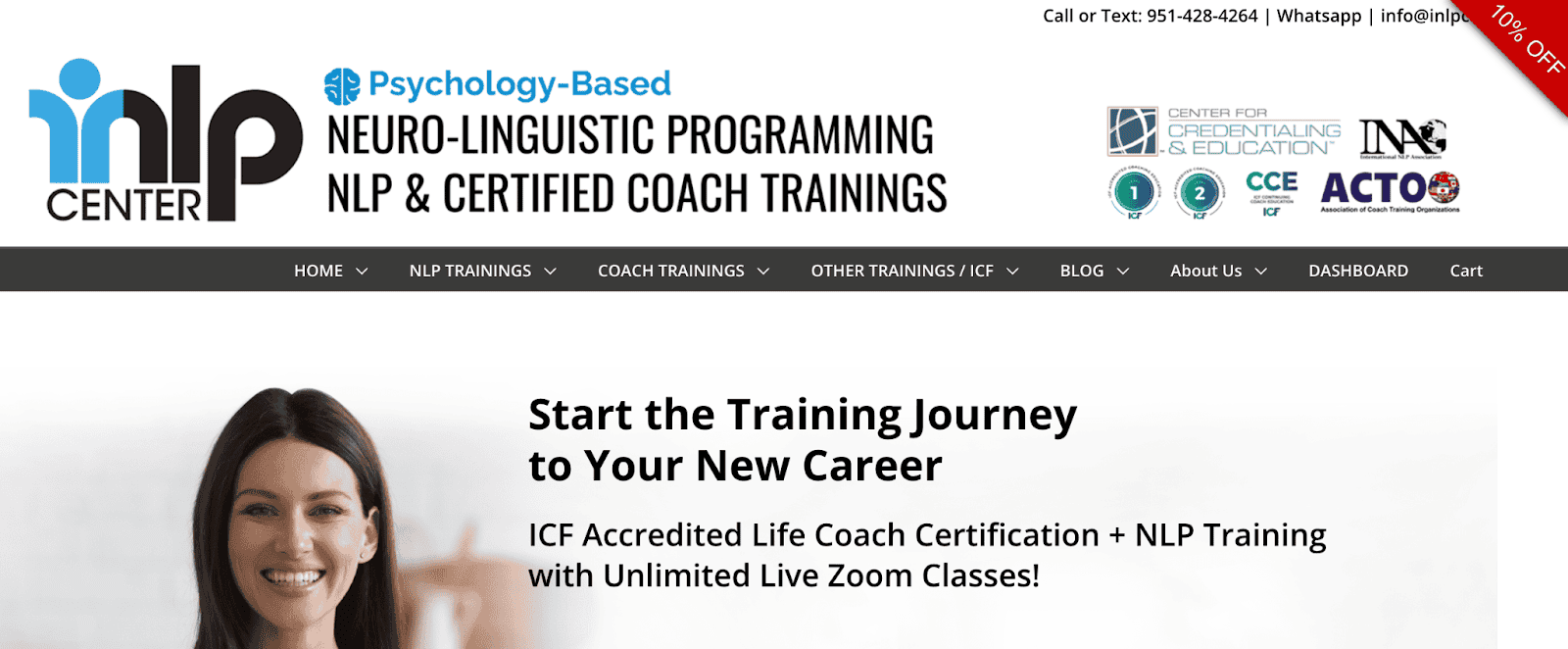
NLP is a set of techniques that connect language, behavior, and thought patterns to reshape how people perceive and respond to challenges.
Certified NLP coaches use structured language patterns to help clients reframe negative thoughts, replace limiting beliefs with empowering ones, and create lasting behavioral change.
Hypnotherapy
Hypnotherapy uses guided relaxation and focused attention to help clients access their subconscious mind. It’s effective for changing deep-seated habits, overcoming fears, and resolving emotional blocks. It facilitates behavioral change at a profound level.
Cognitive Behavioral Coaching
Cognitive Behavioral Therapy (CBT) is an evidence-based methodology that many coaches decide to get trained in. It puts a structure behind identifying and challenging negative patterns and unfavorable behaviors. It creates positive behavioral change through developing healthier coping mechanisms and shifting limiting beliefs.
Positive Psychology
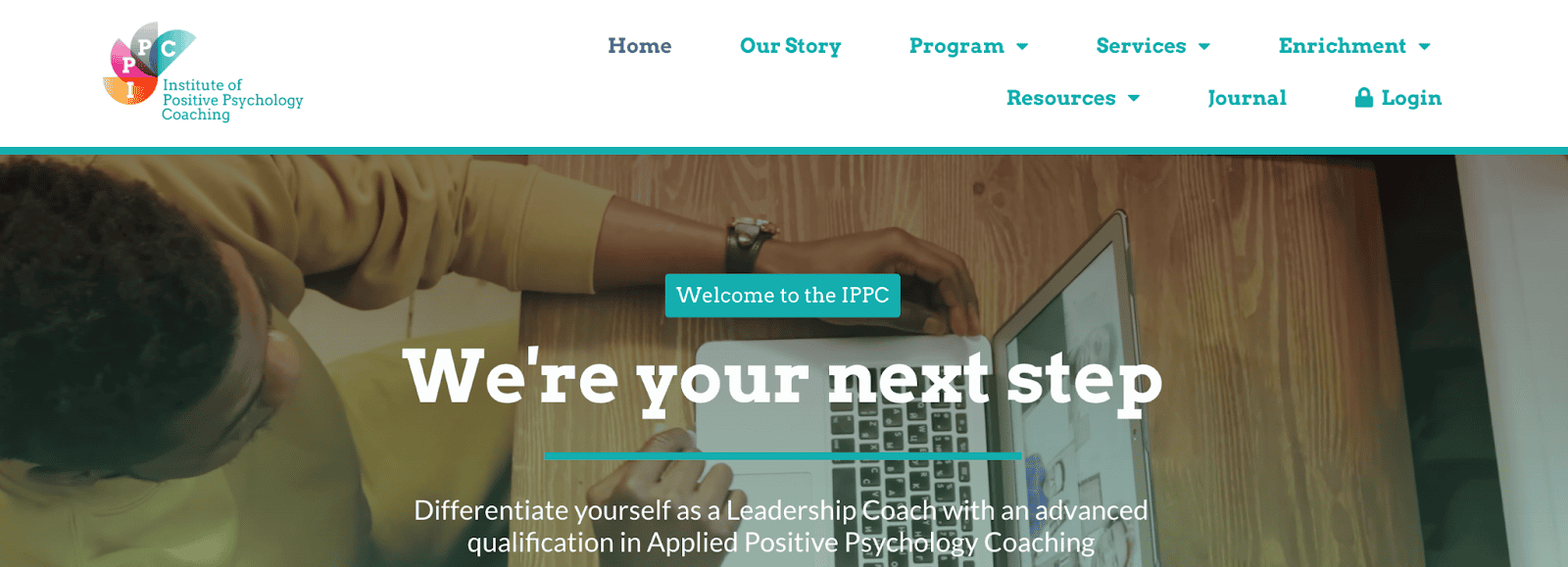
Positive psychology is another area worth getting certified in as a coach. It focuses on strengthening a client’s positive emotions, resilience, and personal strengths. It encourages behaviors that increase well-being and life satisfaction, such as gratitude practices and mindfulness.
The Four Laws of Behavior Change
In his book Atomic Habits, James Clear outlines four key principles for forming lasting habits:
- Cue: The triggers or signals that prompt a behavior. To create new habits, you must make these cues clear and noticeable in your environment.
- Craving: The desire or motivation behind a behavior. By associating positive feelings with the behavior, you make it more appealing and likely to be repeated.
- Response: This is the actual behavior or action. Making the behavior simple and easy to perform increases the chances of it happening, even when motivation is low.
- Reward: The positive reinforcement that follows the behavior. By making the behavior enjoyable, you create an association that encourages repetition.
This framework provides a clear strategy for clients to alter their environment and routines to develop positive habits and break negative ones.
FAQ
Which Coaching Techniques Work Best for Beginners?
Active listening, powerful questioning, and the GROW model are perfect to start with. They can be applied in a wide range of coaching scenarios and add structure to your sessions.
How Do You Choose the Right Coaching Technique?
Consider what your client struggles with and what direction they want to grow in. For example, if they need structure, a coaching model might come in handy. However, if they have difficulty verbalizing their feelings, they might benefit more from using the Feelings Wheel.
Can you Combine Different Methods?
Combining various coaching techniques based on your client’s needs can be particularly effective. For instance, you may use paraphrasing at the “Reality” stage of the GROW model to clarify what stands in the client’s way. Then use the SMART framework at “Way forward” to refine their action steps.
How Do You Measure Technique Effectiveness?
You can measure the effectiveness of the coaching tools in your inventory by tracking your client’s progress and asking for feedback. If a technique leads to positive changes in behavior or more clarity about the client’s long-term objectives, it suggests that it is working.
Make Your Coaching Sessions More Effective With Paperbell
Incorporating these techniques into your practice can make a world of difference in your client relationships and results.
With Paperbell, you can streamline your coaching process through custom surveys and coaching exercise templates uploaded into your client’s self-service portal.
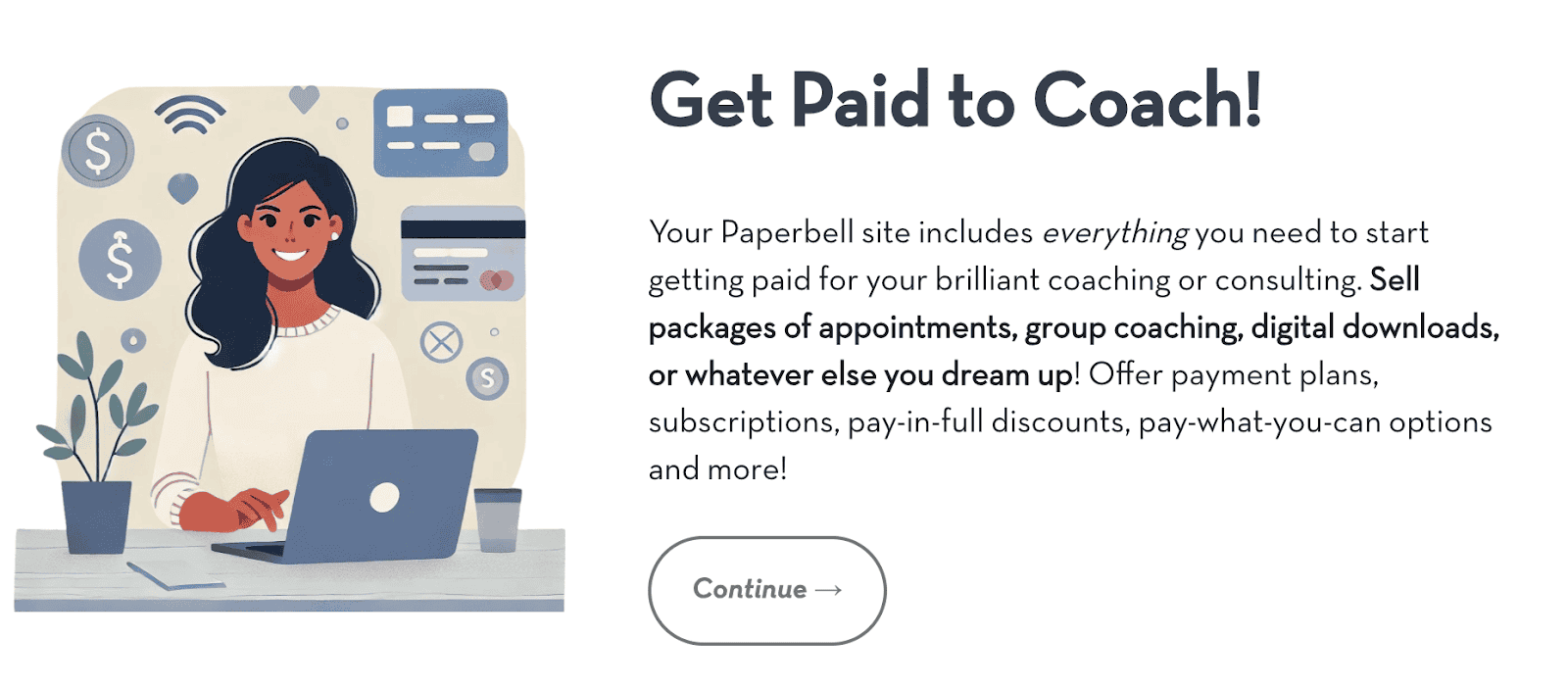
Beyond keeping your practice organized, Paperbell also handles your website, bookings, payments, contracts, email automation, and more.
Try Paperbell for free and see how it can transform the way you work with clients.
